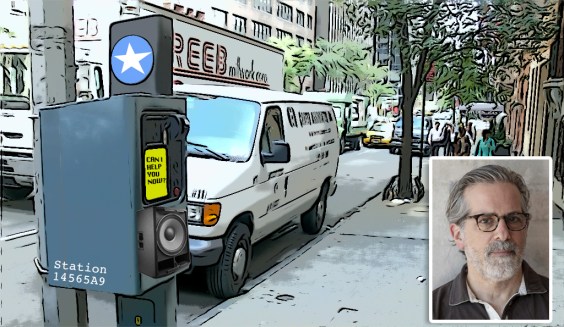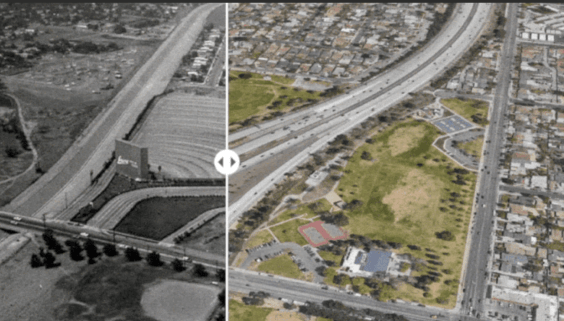Trader Joe's announced last week that it is moving into a new location on Nob Hill, at the southwest corner of California and Hyde streets, where the lease for Cala Foods expires in late December. It's a dense, transit-rich neighborhood that sits along the California cable car line. Given the popularity of TJ's four other San Francisco locations, which cater largely to motoring shoppers, will it bring more cars and congestion to the neighborhood?
"The plan is to keep the parking configured exactly as it is right now. There will be about 80 spaces total after we've re-striped the garage and complete the work," said Dan Safier, the president of the Prado Group, the developer. "Plus, you have a lot of people who live in the area who just don't live with cars, so shoppers will be using public transportation or arriving on foot."
Trader Joe's recently abandoned plans for a Castro location because neighborhood groups courageously pushed for no parking. The chain ultimately pulled out, according to Supervisor Scott Wiener, because "the location was not going to work for its business model, one that is fairly reliant on automobile visits."
Safier said Trader Joe's plans to occupy a little over half of the 25,000 square foot building on Hyde and will begin construction in early 2012. Because the change in tenancy doesn't require a change of use, it doesn't trigger a Planning Department review, similar to the process for the Whole Foods that recently replaced another Cala Foods location in the Haight. (Update: According to the SF Planning Department, because Trader Joe's is formula retail, it will actually require a conditional use permit. It's possible the Planning Department could require that Trader Joe's take measures to prevent a vehicle queue and address pedestrian circulation at this location).

It's hard to tell what the demand for parking might be at TJ's Nob Hill location, but the Planning Department has begun to require that large new stores prevent traffic queues like the long line of cars frequently spotted at TJ's Masonic Avenue location.
For the planned Whole Foods/condo project at Market and Dolores streets, also being developed by the Prado Group, the Planning Department requires implicit measures "to ensure that vehicle queuing does not occur." However, some advocates doubt that Whole Foods will be able to prevent a traffic queue without charging for parking to properly manage the supply, and are frustrated that there's really no mechanism in place to enforce the measures.
"Right now the MTA (Municipal Transportation Agency) isn't required to do planning code enforcement, nor is Planning empowered to do traffic enforcement, so it could very easily fall through the bureaucratic cracks," said Tom Radulovich, the executive director of Livable City.
At TJ's Nob Hill location, one concern about making it more attractive to people on foot is the parking lot that fronts the store. The entrance has a substantial setback from the sidewalk, notes resident Michael Jacinto, who lives nearby.
"You kind of have to dodge cars sometime," said Jacinto. "I think there will be more cars than there are now." He hopes, however, that the new store will lead some neighbors who might normally drive to the other TJ locations to walk instead.






